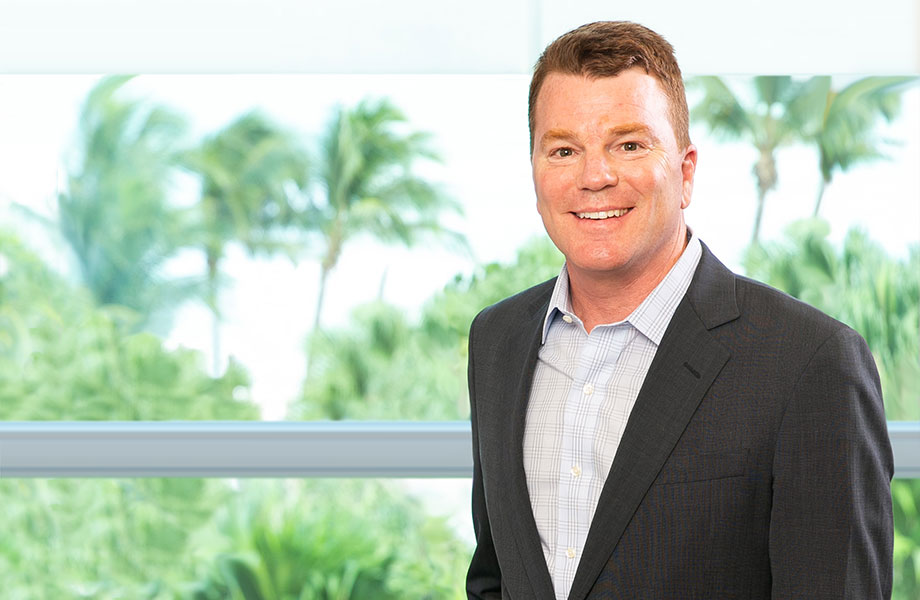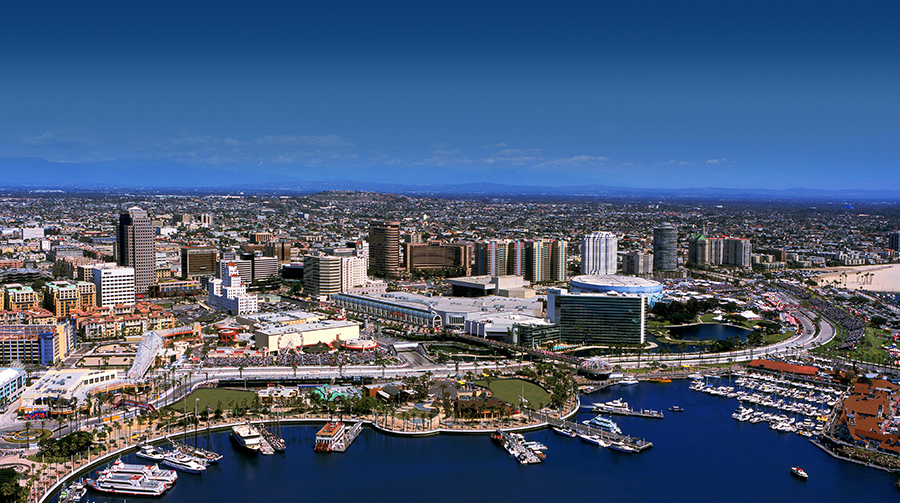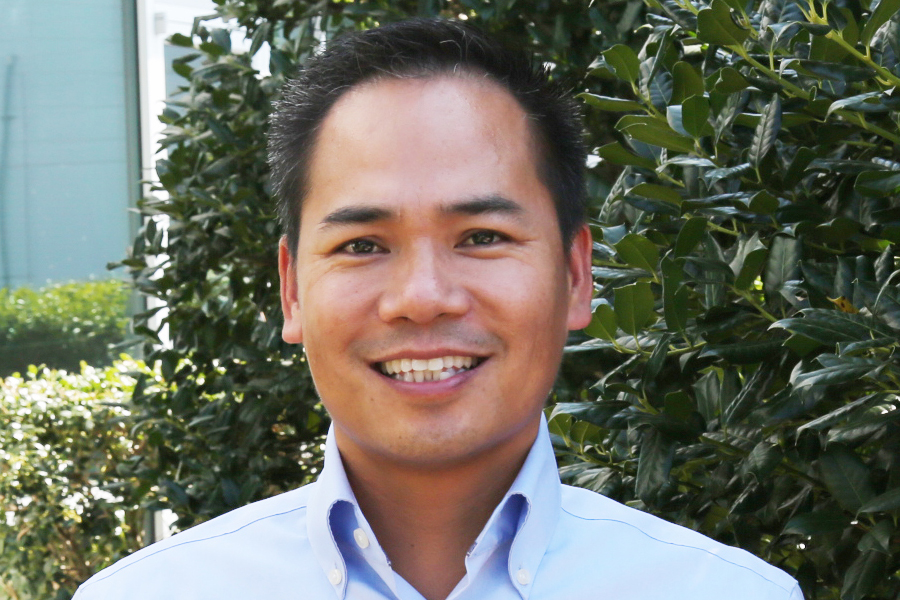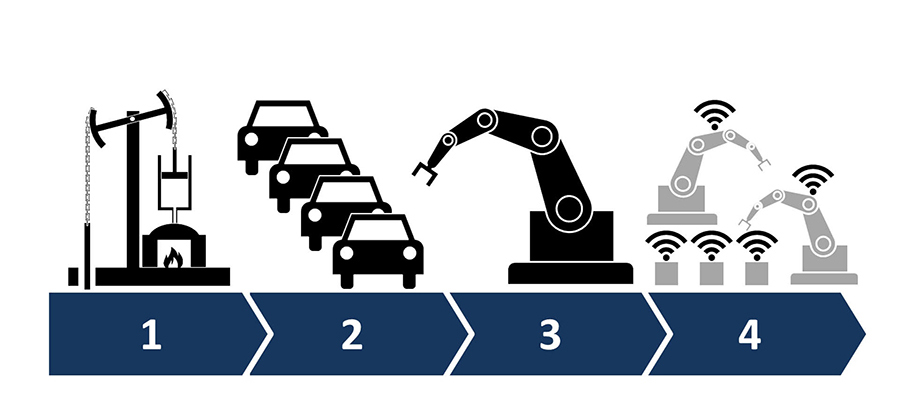
Customer Connection

A Note From Colin Sabol: Our Shared Sustainability Efforts
This November, I’ll be joining many of you at Bolsa Chica State Beach in Orange County, CA for our Xylem Watermark customer and distributor volunteer event during the annual Reach conference. I’m grateful that more than 100 people have signed up and share our commitment to sustainability. While this may be our first Watermark event at Reach, we are always working together to strengthen the environment. In fact, we have had the chance to volunteer with several of our customers this year and look forward to even more shared volunteer opportunities in the future.
As an extension of our shared sustainability work, I wanted to highlight Xylem’s sustainability strategy and what it means for our customers. This strategy is focused on three key pillars: Serving Our Customers, Empowering Communities and Building a Sustainable Company.
The first pillar is paramount – Serving Our Customers. The greatest opportunity we have in shaping a more sustainable future is putting the right tools in your hands and providing unmatched service and support. Our technical support team is available 24/7 to customers – including increased support for disaster preparedness and recovery.
Sustainability is also about making the best use of the tools at hand, which is why we have prioritized training and education for our customers. Our Reach Conference is completely packed with more sessions and hands-on learning labs than ever before to maximize the experience for attendees.
The second pillar of our sustainability strategy is Empowering Communities. We work every day to create social impact and serve communities in need through Xylem Watermark. We also strive to improve communities through our shared work with customers, including Long Beach Gas. This city eliminated 80 truck rolls per-day using our FlexNet® communication network.
Lastly, we’re focused on Building a Sustainable Company. We know that in order to advance sustainability, we have to be a company with a strong foundation that executes with discipline today while also focusing on the future. These efforts have not gone unnoticed. For the second consecutive year, Xylem has been recognized in Fortune’s Change the World list of the top 50 companies that have made a significant social impact through their core business strategy.
I hope to see you at Reach and volunteer with you!

Colin R. Sabol
Senior Vice President and President
Xylem Measurement & Control Solutions

Customer Spotlight: Long Beach Gas
New technologies and a growing population made the City of Long Beach team want to enhance their gas service delivery for residents and businesses.
To address the needs of its customers and lay a solid foundation for future growth, the city transitioned to a next-generation advanced metering infrastructure (AMI) solution from Sensus.
The network solution has proven dependable and accurate for the city from the start. They are able to remotely monitor meters, allowing them to save time and boost efficiency. Using this solution, Long Beach Energy resources has eliminated about 80 truck rolls per day.
Read the full case study to learn more about Long Beach Energy Resources’ deployment of the AMI gas solution and how they plan to expand its use for residential and commercial water customers.
The next customer spotlight could be you. Contact Lindsay Hill to share your story.

Make Your Watermark: Volunteer, Educate, Donate and Innovate with Us
Our Xylem family is committed to solving the world’s water challenges through our corporate social investment program, Xylem Watermark.
Global water challenges are escalating. All over the globe, people are effected by more weather-related disasters and water scarcity and quality issues than ever before. We know that these problems are too big for any organization to solve alone – and that’s why this year, we’ve opened our Watermark program to external stakeholders, including our valued customers, distributors. We want to collaborate with our stakeholders to make a sustainable difference.
There are several ways your organization can join us:
- Volunteer at a Watermark event in your community, or plan a new event with your local Sensus team
- Educate on water, sanitation and hygiene (WASH) at local schools or organizations
- Donate to one of our non-profit partners through our Community Impact Portal
- Innovate with us as we develop new smart water solutions
Engaging with our Watermark program can help you to leverage our existing activities and resources to make a difference, while deepening relationships within your own team and with our employees.
Our Watermark Month of Service has just kicked off, so call your sales rep or distributor or reach out to us at [email protected] to volunteer. Let’s make a difference together.

Sensus Reach: The Countdown Begins
We’re about a month away from this year’s Sensus Reach Conference – it’s not too late to register.
Check out the topics we will cover this year during our sessions to plan out your trip. You can view the sessions by utility type or topic. Our Learning Labs feature hands-on training with Sensus solutions. We’ve added more of them to the schedule this year, including new Learning Labs for water utilities.
The Sensus Partner and Advisor Network (SPAN), which is open to all Sensus customers, will hold their annual meeting at the conference. If you’re a member, maximize your time at the conference by attending the subcommittee breakouts session on using the SPAN community site and the new member orientation. If you’re not a member, check out the SPAN booth located right outside of the Exhibit Hall to learn the benefits of joining more than 200 of your peers in the Sensus community.
There are also plenty of new opportunities to network and meet your fellow Sensus customers at Reach! Join us on Sunday for golf or a Watermark volunteer event before heading to the Welcome Reception.
Wrap up a great conference at the Closing Celebration, which will feature live music, roaming entertainment and the reveal of where we’re heading in future years.
See you in Anaheim on November 3!

Meet the People: Tuan Lam
Tuan Lan, Director of Technical Services at Sensus, has more than 15 years of experience leading global technology teams and engineering IT solutions. His technical support team is the first line of response for customer inquiries.
“Our responsibility is to make sure we respond to our customers within our service level agreement (SLA) 100% of the time,” said Tuan. “When issues arise in the field, our main focus is make sure that customers’ business is not interrupted or minimized.”
Tuan supervises a team of customer support specialists who provide product and troubleshooting support for hardware, software, server and application tools. The customer support team is trained on multiple products and solutions to address all customer calls. Although there are subject matter experts for each solution, the team cross-pollenates so that there is as much overlap and attention as possible.
“We constantly evaluate our team make sure we have sufficient coverage not just across North America, but also across all verticals and product types,” said Tuan.
Disaster Response
In times of disaster and weather events, Tuan’s team has processes and procedures in place to ensure that they can respond to customers in need quickly and efficiently.
Prior to Hurricane Dorian, which recently hit the Southeast, Tuan and his team worked to increase resources to monitor systems for customers in the area, and immediately took action to have a team ready both remotely and on the ground.
“During a storm, we’re looking at whether customers’ processes are completing fully and on time. If a tower isn’t communicating during or after an event, we work with our regional field engineers to dispatch and check on the equipment,” said Tuan.
Tuan’s team is available 24/7 as a dedicated resource to customers. They’ve built a FAQ self-help resource for customers around common issues, to enable them to troubleshoot on their own as well.
“We’re always trying to improve how we support our customers,” said Tuan. “That’s why we look for ways to be more proactive than reactive.”
Should you ever need to connect with Tuan’s team, please use the support line below:
800-METER-IT
Monday-Friday, 8 am-8 pm EST OPTION 2
After business hours and holidays OPTION 8

Sensus Blog: What is SCADA’s role in Industry 4.0?
The term Industry 4.0 was first mentioned at the Hannover Trade Fair in 2011. Experts proclaimed that a new Industrial Revolution had arrived, driven by automation, communication and the internet. A flag was planted and smart industrial manufacturing had arrived.
Industry 1.0, 2.0 and 3.0
As you can probably surmise, there were several “Industry” iterations before Industry 4.0. The first industrial revolution, or Industry 1.0, was built around the development of steam/water-based engines. Industry 2.0 gave rise to the light bulb, telephone, phonograph and internal combustion engine.
Starting in the 1980’s, Industry 3.0 saw analog technology give way to digital technology. The personal computer became a reality and the internet was gaining momentum. During this same time period, often referred to as the digital revolution, SCADA’s functionality increased. From head end systems to SCADA endpoints, utilities were getting more out of their systems. This correlated closely with the escalation in computer processing power during this era.
Industry 3.0 enabled water, gas and electric utilities to remotely monitor and control field equipment more efficiently. Operationally, utilities realized tremendous cost savings. They were able to reduce the need to go to physical locations, were able to remotely monitor and control operations, and through digitalization, utilities were able to offer much greater reliability to industrial and residential customers. Arguably, this era was the single most important time for the utilities…until now.
Industry 4.0
If Industry 3.0 was a digital revolution, then Industry 4.0 should be called a quantum leap. By adding embedded systems, artificial intelligence, and the Internet of Things, Industry 4.0 is pushing forward at breakneck speed.
For critical infrastructure like water, gas and electric SCADA, this means more intelligence, automation, self-learning and a fundamental shift from a centralized to a de-centralized approach. Instead of the centralized head end SCADA system bearing the brunt of the decision making, devices at the grid edge have the power to act intelligently. Today there are examples of edge intelligence being implemented by utilities around the world. It’s disruptive and efficient. Utilities are taking notice.
Electric SCADA
There are plenty of illustrations that showcase this disruption. For instance, let’s examine two components common to electric distribution—a pulse closer and a recloser. Simply put, a pulse closer is a recloser with additional intelligence. When it detects a fault on the line, instead of operating immediately, it sends a pulse down the line to see if the fault it still there, and then only operates based on persistence of that fault. This intelligence extends the product’s lifespan and reduces network blips. Both the utility and the end-user benefits.
Another example is the ability of field assets to intelligently speak with each other over a secure communication network. One recloser with an intelligent communications module may see a fault, can ‘team’ with other reclosers to see who can back feed and carry that load, and then operate accordingly. Completely without instruction from a centralized SCADA system. This cuts down on restoration times, introduces higher levels of efficiency, and improves overall SAIDI, MAIFI, CAIDI metrics.
Water SCADA
In Water SCADA, consider an intelligent communications module connected to a pump controller. Pair it with a Remote Terminal Unit (RTU) that is connected to a level sensor on an overhead storage tank and a powerful solution is born. When the RTU detects a critically low level of water in the storage tank, a signal can be sent to the Pump Controller to turn on and start filling. Additional logic like suction/discharge pressure, flow and more can be added into this edge logic without intervention by the head end SCADA system.
Gas SCADA
In Gas SCADA, a product with embedded intelligence can host an integrated radio, remote shut off valve, pressure and temperature sensor. When the SCADA endpoint detects a dangerous situation, it shuts off the supply of gas and can send notification to nearby devices alerting them to this critical situation. Each year there are countless casualties and injuries attributed to gas explosions.
In essence, each of these devices are now acting like little mini SCADA systems, and have the sophistication to create communication networking between them to do intelligent actions. In Industry 4.0, it doesn’t just stop there. Once these autonomous devices start performing these automated actions, learning can occur. The notion of artificial intelligence and machine learning of these embedded systems is in the scope for Industry 4.0. This not only reduces the utilities need to micromanage assets, but allows their devices to build confidence as they grow into their learning.
Lastly, it’s impossible to discuss Industry 4.0 without mentioning the Internet of Things (IoT). IoT will have a large impact on both AMI and distribution automation systems. Today, thanks to the rise of smart home systems such as Amazon Echo and Google Home, residential consumers are adopting IoT accessories such as intelligent thermostats, connected home security systems and smart lighting systems at lightning speed.
Forward-looking utilities are seeing the benefits of leveraging programs to tie into some of these smart home systems. For example, a utility may offer a Demand Response program that gives the utility control over a smart thermostat during peak times. The customer gets a price break and the utility gets more control during peak load events to reduce unnecessary expenses related to additional power generation or purchasing.
Outside of the home, utilities are seeing the benefits of investing in street lighting control systems that offer a myriad of sensors. From motion detection to gunshot notification alarms, street lighting is another connected system that gives value to end-users as well as the utility. The net effect on the SCADA market is that Industry 4.0 is affecting us all: consumers, SCADA system vendors, SCADA IED vendors, communication providers and sensor manufacturers.
When done correctly, smart cities are born.
For more insights into smart utilities, visit the Sensus Blog.
Upcoming Events
In the News
Check out some of our most recent news releases and contributed articles.
NEWS RELEASES
- Fayetteville PWC Reflects on Hurricane Florence One Year Later
(September 12, 2019)
- Montana Co-op Moves from Power Line Carrier System to Sensus Solution
(September 24, 2019)
ARTICLES
- Choosing Correct AMI System for Gas Utilities
(Pipeline & Gas Journal | July issue) - Ohio Co-op's AMI Choice Boosts Efficiency, Cuts Costs
(Rural Electric Magazine | July print issue) - Triangle headlines: Zift, Sensus, Parexel, Talos, Infinia ML, CommScope
(WRAL TechWire | July 1, 2019) - Ensuring the security of networks and data
(com | July 2, 2019) - Safford, Ariz. Establishes Smart Utility Network
(WaterWorld | July 30, 2019) - Arizona City Taps Raleigh Tech Firm Sensus for its‘Smart Utility Network’
(WRAL TechWire | July 30, 2019) - Safford, AZ Establishes Smart Utility Network with Sensus, a Xylem Brand
(ThomasNet News | July 31, 2019) - Smart Utility Cuts Leaks by 40% and Field Budget by $8,000
(Smart Energy International | July 31, 2019) - Tapping Into a Smart Utility Network To Uphold Water Quality
(Water Online | August 20, 2019) - Solutions to Reduce Water Loss and Gain Revenue
(Water Innovations | September Issue) - Pressure Data Is Critical To Predicting Distribution Systems Issues
(Water Online | September 3, 2019) - Fayetteville PWC Reflects on Hurricane Florence One Year Later
(T&D World | September 12, 2019) - Fayetteville PWC Reflects on Hurricane Florence One Year Later
(Smart Water | September 12, 2019) - Smart Cities Start with Smarter Utilities
(Applied Wireless Technology | September 17, 2019) - Fayetteville PWC Reflects on Hurricane Florence One Year Later
(T&D World | September 19, 2019) - Montana Co-op Moves from Power Line Carrier System to Sensus Solution
(POWERGRID International | September 27, 2019)
CASE STUDIES
- Smart Utility Network Progresses for Safford, Arizona
(July 30, 2019) - Sensus Technology Aids Fayetteville PWC in Response to Hurricane Florence
(September 12, 2019) - Montana Cooperative Builds for the Future with Sensus Smart Utility Network
(September 24, 2019)
About Sensus Customer Connection
Sensus Customer Connection is a quarterly e-newsletter focused on company announcements, initiatives, product information and upcoming events. It's also a place where you can learn from your peers and hear about how Sensus products and services help them achieve their organizational goals.
If this issue was forwarded to you and you'd like to receive future issues, you can subscribe here.
Share your feedback
We encourage you to get in touch with our team to share your success story. Contact Lindsay Hill and the next customer spotlight you read might be your own.